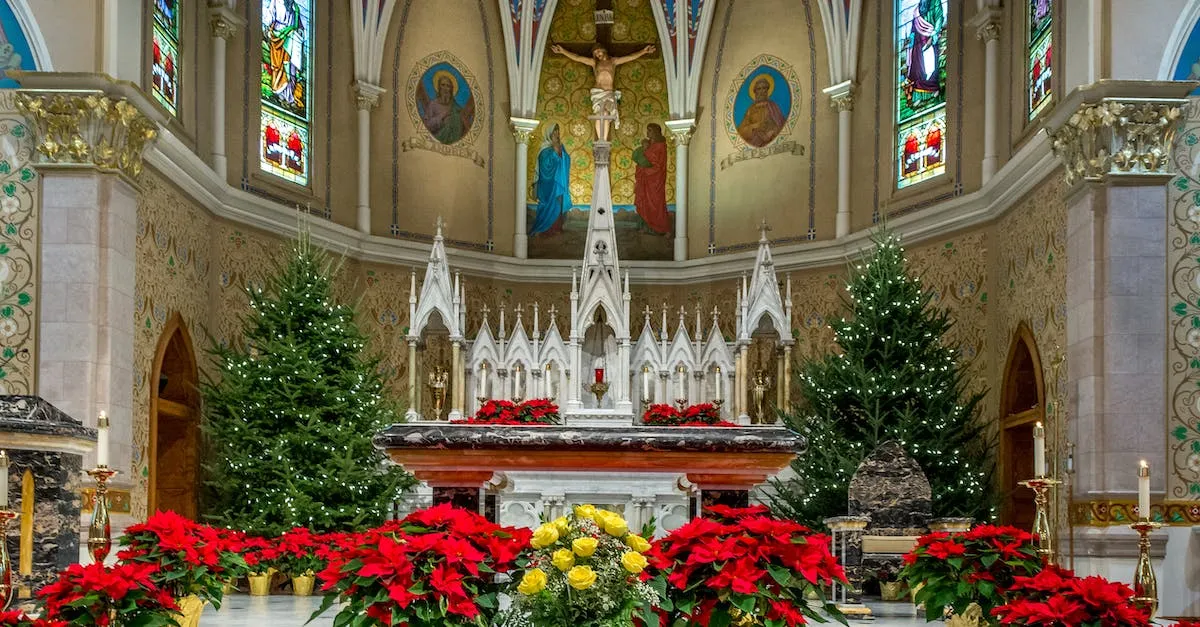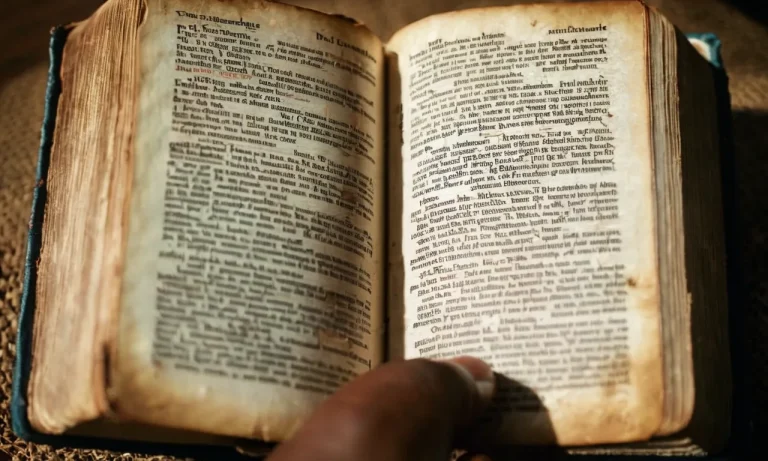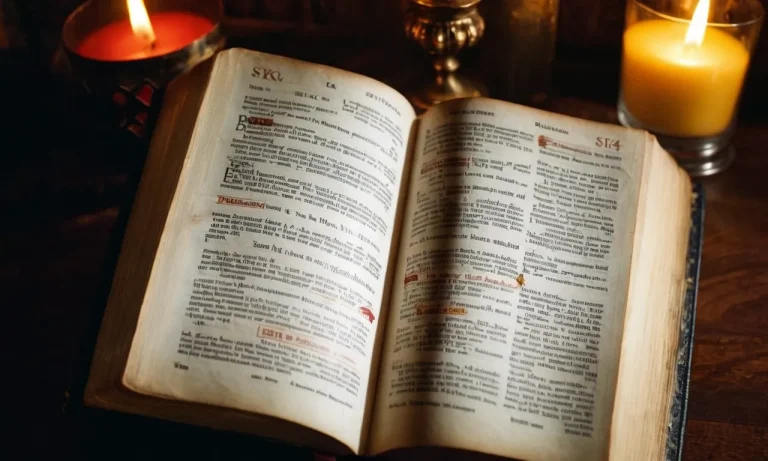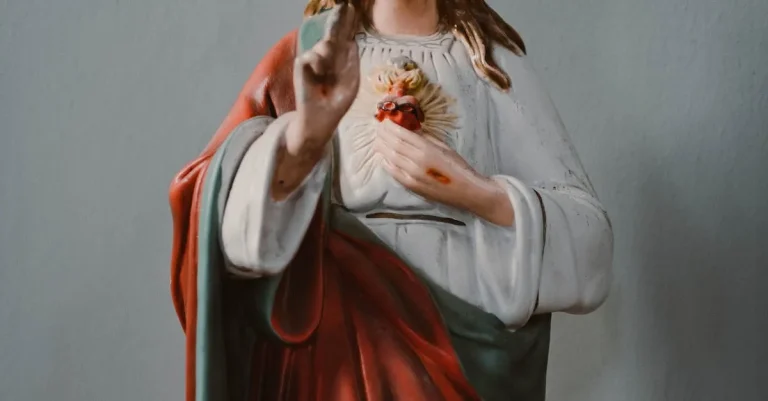How Many Times Was Jesus Anointed?
If you have ever wondered how many times Jesus Christ was anointed during His life and ministry, you’re not alone. This is a common question for many Christians seeking a deeper understanding of biblical events.
In this comprehensive guide, we will examine each account of Jesus being anointed to arrive at a clear answer.
If you’re short on time, here’s a quick answer to your question: Jesus was anointed three times according to the biblical accounts in the Gospels.
The Anointing at Bethany by Mary
The Account in John 12:1-8
The story of Mary anointing Jesus is told in John 12:1-8. It takes place in the village of Bethany, in the home of Lazarus, Mary, and Martha, six days before the Passover. While Jesus is reclining at the table, Mary takes an expensive bottle of pure nard perfume, pours it on Jesus’ feet, and wipes them with her hair.
Judas Iscariot objects to the wastefulness of this lavish act, but Jesus defends Mary’s beautiful expression of love and prepares His followers for His coming death and burial.
Timing Relative to Jesus’ Crucifixion
The timing of this account is important, as Jesus says Mary is preparing Him “for the day of His burial” (John 12:7). The Passover mentioned is the last one Jesus will celebrate before His crucifixion, just a few days later.
So Mary’s extravagant display occurs less than a week before Jesus’ death, emphasizing the personal nature of her adoration.
Mary’s Lavish Act of Worship
By anointing Jesus, Mary engages in an intimate act of sacrificial worship. Anointing was often done to honor kings and priests, so her gesture indicates her understanding of Christ’s true identity and mission.
The perfume was extremely valuable – worth 300 denarii, equivalent to an average worker’s yearly wages – illustrating the depth of Mary’s devotion. Jesus praises her lavish display of love, contrasting it with the betrayal He is about to experience.
Truly, “she has done a beautiful thing” (John 12:7).
The Anointing of Jesus by a Sinful Woman
The Account in Luke 7:36-50
In Luke 7:36-50, an account is given of Jesus being anointed by a sinful woman while dining at the house of Simon, a Pharisee (Luke 7:36, 39). The woman brings an alabaster flask of ointment and weeping, she anoints Jesus’ feet with her tears and wipes His feet with her hair, kissing them and pouring ointment on them (Luke 7:37-38).
Jesus’ Lesson on Love and Forgiveness
Jesus uses this as an opportunity to teach Simon and the others dining there about love and forgiveness. Despite Simon seeing her as a sinner, Jesus points out that her extensive actions displayed her great love (Luke 7:44-47).
While Simon failed to show Jesus customary hospitality, the woman continually showed selfless love through her sacrificial actions of anointing His feet.
Jesus then says to the woman, “Your sins are forgiven” (Luke 7:48), showing that while humans judge outwardly, Jesus looks at the heart and extends mercy to those with genuine repentance and faith.
Debate Over the Woman’s Identity
There has been some debate over the woman’s identity in this account. Some believe her to possibly be Mary Magdalene (gotquestions.org) or another sinful woman who travelled with Jesus, while others see no reason to equate her with other women mentioned elsewhere.
The main point is this woman’s expression of love and adoration for her Savior. Despite what others thought of her, she poured out her best to honor Jesus. And He used it to teach that those forgiven much, love much (Luke 7:47).
Jesus Anointed by Unnamed Woman Before His Burial
Account in Mark 14:3-9
The account of an unnamed woman anointing Jesus before his burial is recorded in Mark 14:3-9. As Jesus was visiting Simon the Leper’s house in Bethany, a woman came with an alabaster flask filled with expensive perfumed oil.
She proceeded to pour the oil over Jesus’ head, which astonished some of those present. They asked why the oil had not been sold and the money given to the poor instead. Jesus responded by telling them to leave her alone, for “she has done a beautiful thing to me” and “she did what she could” to anoint his body beforehand for burial.
He said that wherever the gospel is preached, what this woman did would also be told in memory of her.
Prophetic Act Foretelling Jesus’ Death
This anointing of Jesus served as a prophetic act that foretold his impending death. Anointing bodies with perfumed oils was a common practice in preparing bodies for burial in ancient Jewish culture. By anointing Jesus in this way, the woman demonstrated her devotion to him in the face of his foretold suffering and death.
Her extravagant display of love pointed towards his self-sacrifice on the cross soon to come. Jesus confirmed that she had unintentionally anointed him beforehand for his burial. Thus, her actions became a physical prophecy and reminder to all those present that Jesus was on his way to make the ultimate sacrifice as the Messiah.
Comparison to Other Anointing Accounts
The anointing by this unnamed woman is often compared to other accounts:
- It has similarities with an account in Matthew 26:6-13 and John 12:1-8 where Jesus was anointed in Bethany by a woman named Mary, assumed to be Mary Magdalene.
- All three accounts tell of Jesus being anointed by a woman with precious oil shortly before his death, but they differ in the details.
| Detail | Mark 14:3-9 | Matthew 26:6-13 | John 12:1-8 |
|---|---|---|---|
| Location | Bethany, at Simon the Leper’s house | Bethany, in the house of Simon the Leper | Bethany, in the house of Lazarus |
| Woman’s identity | Unnamed woman | Unnamed woman | Mary, sister of Martha and Lazarus |
| Objections raised | Why wasn’t this perfume sold and money given to the poor? | Why this waste? | Why wasn’t this perfume sold and money given to the poor? |
| Jesus’ response | Leave her alone. She anointed my body beforehand for burial. | Why do you trouble the woman? She has done a beautiful thing to me. | Leave her alone. She intended to keep it for the day of my burial. |
While varied, these accounts give consistent testimony that Jesus was anointed shortly before his death, even though he and those around him knew he would soon be buried.
Conclusion
In summary, Scripture records three separate instances of Jesus being anointed during His earthly ministry. Each account provides unique details and theological significance. Studying each passage carefully enables us to construct an accurate timeline and appreciate the full narrative arc surrounding these poignant anointing events.
Jesus was anointed by Mary, by a sinful woman, and by an unnamed woman – three beautiful acts of worship preparing Him for His sacrificial death and resurrection.








